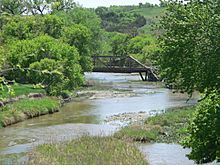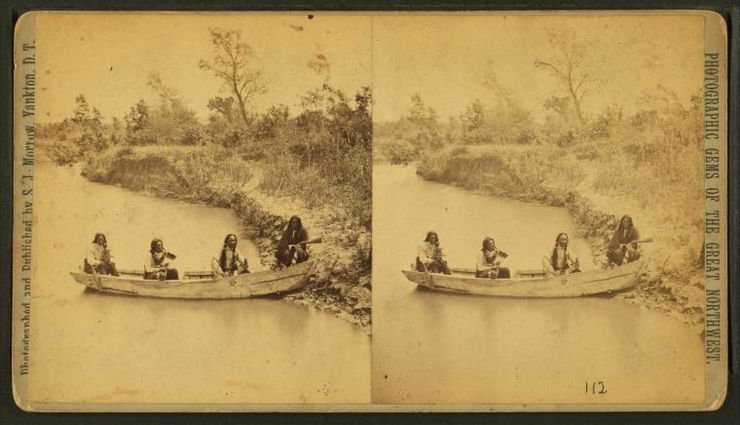Ponca Creek (Missouri River tributary) facts for kids
Quick facts for kids Ponca Creek |
|
|---|---|
 |
|
| Country | United States |
| States | South Dakota, Nebraska |
| Physical characteristics | |
| River mouth | Missouri River 1,217 ft (371 m) |
| Length | 139 mi (224 km) |
| Basin features | |
| Basin size | 810 sq mi (2,100 km2) |
Ponca Creek is a stream that flows through parts of southern South Dakota and northern Nebraska in the United States. It is about 139 miles (224 km) long. This creek is named after the Ponca people, a Native American tribe who lived in this area for a long time.
Contents
Where Ponca Creek Flows
Ponca Creek starts in southern South Dakota, about 4 miles (6.4 km) west of U.S. 183, near a town called Colome. From its source, the creek first flows east. Then, it turns to a southeast direction. It continues flowing southeast until it reaches the area around Bristow, Nebraska. After Bristow, the creek turns east again. Finally, it flows into the Missouri River about 6 miles (9.7 km) northwest of Niobrara.
The entire area that collects water for Ponca Creek is called its watershed. This watershed is very large, covering about 810 square miles (2,100 km²). It stretches from central Tripp County to central Gregory County in South Dakota.
Towns Along the Creek
Many towns are located near Ponca Creek, benefiting from its water and the surrounding land.
Towns in South Dakota
The towns in South Dakota that are part of the Ponca Creek watershed include:
Towns in Nebraska
The towns along Ponca Creek in Nebraska include:
Smaller Streams Joining Ponca Creek
Ponca Creek has several smaller streams that flow into it. These smaller streams are called tributaries. They add more water to Ponca Creek as it flows towards the Missouri River. Some of the named tributaries include:
- Masdon Creek
- Murphy Creek
- Blue Eyes Creek
- Hay Creek
- Willow Creek
- Squaw Creek
- Dizzy Creek
- Dry Creek
- Tobacco Creek
- Spring Creek
- Crooked Creek
- Beaver Creek
- Whiskey Creek
- Dewey Creek
Ponca Creek does not flow into any large lakes before it reaches the Missouri River.


